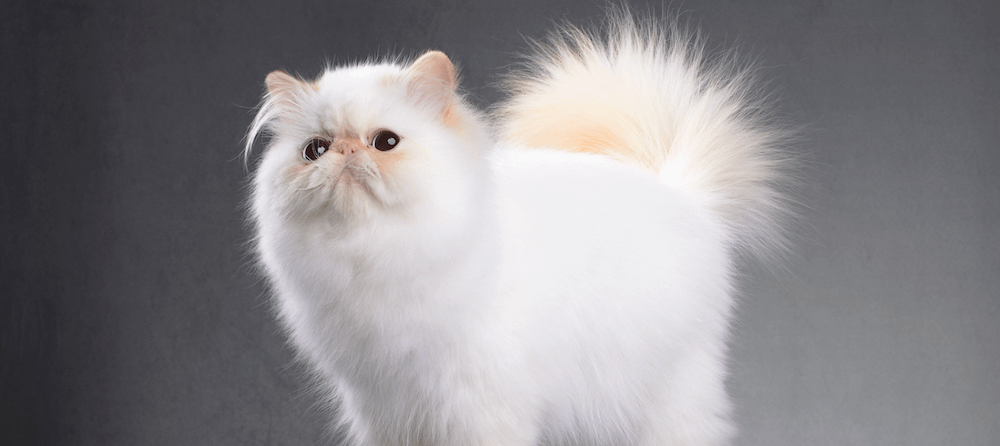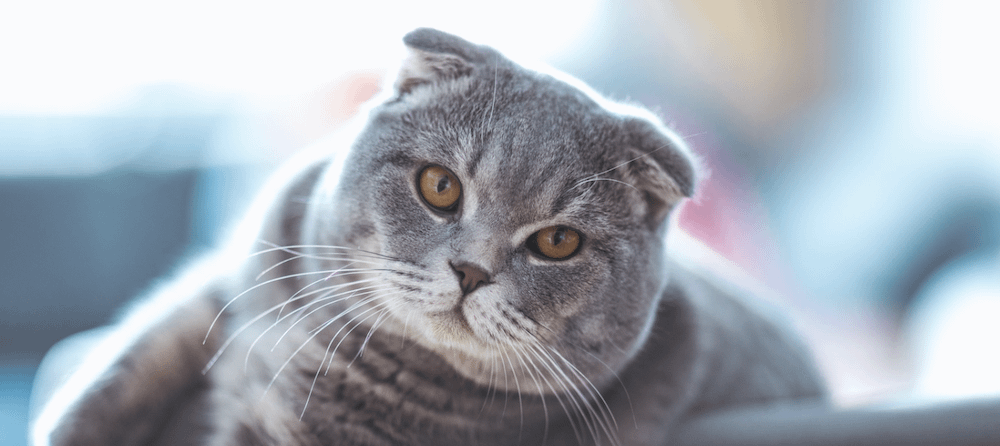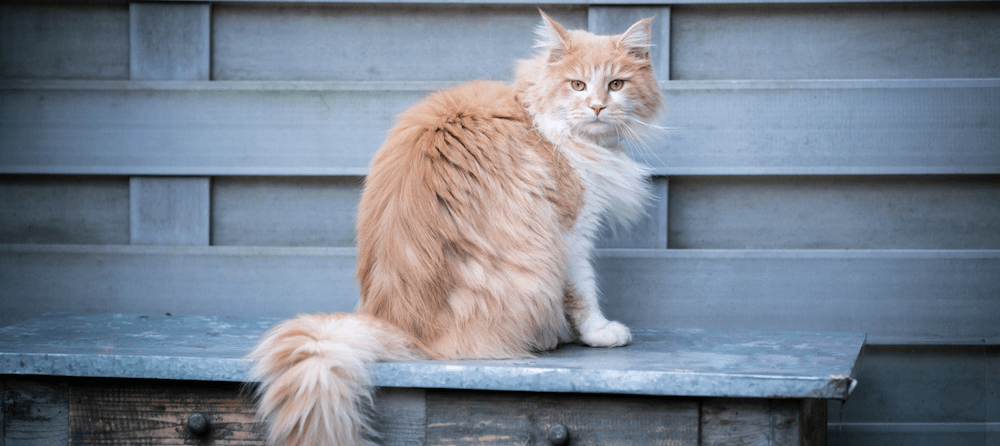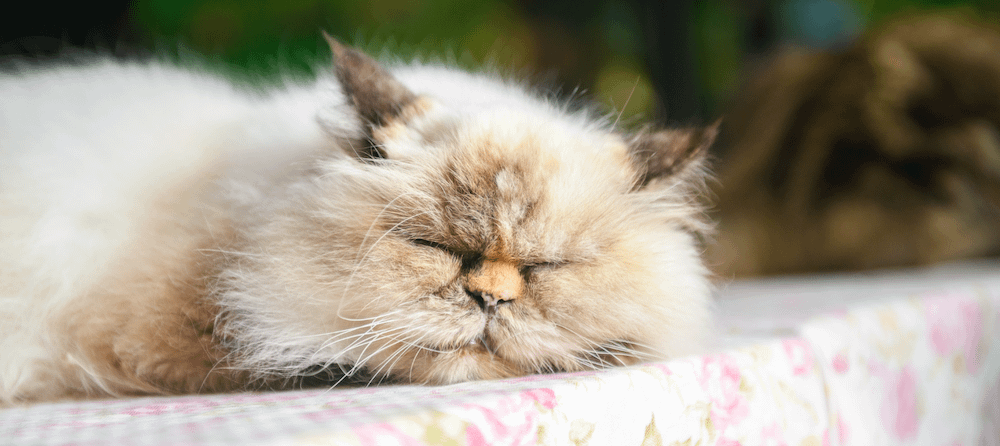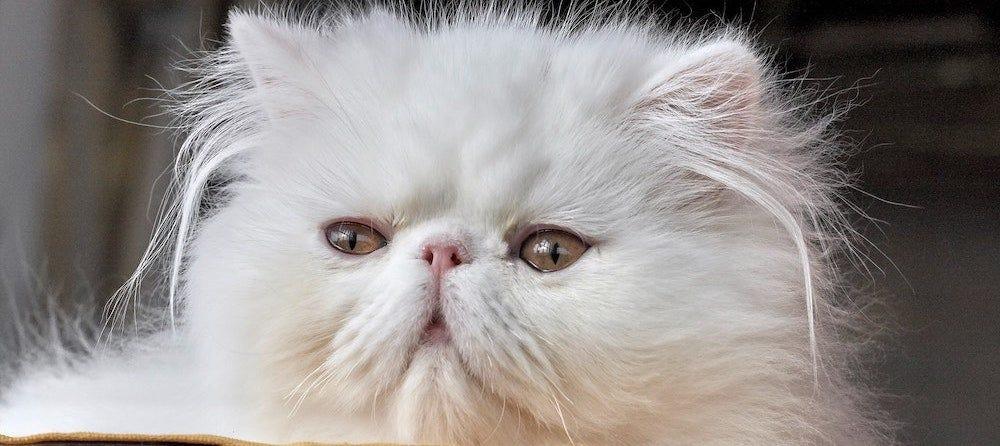With their luxurious manes, snubbed noses, and round eyes, Persian cats are an instantly recognizable breed. Believe it or not, this cat’s temperament is even more celebrated than their majestic looks. The Persian is truly one of the sweetest, calmest cat breeds you’d be lucky enough to meet.
Because they come off so docile (and they really are), you might be surprised by just how many centuries these well-traveled cats have been around. Has their long history affected their lifespan? Are there inherited diseases Persian pet parents should be on the lookout for? We’ll explore these questions and more.
How long a cat will live depends on many factors, including nutrition, exercise needs, genetic conditions, and proper grooming. Taking the best care of your pet can help ensure they live a long and healthy life.
You should be prepared to meet the many needs of a Persian cat before you adopt one. Learning about their care requirements can prolong their time spent as your sweet sidekick.
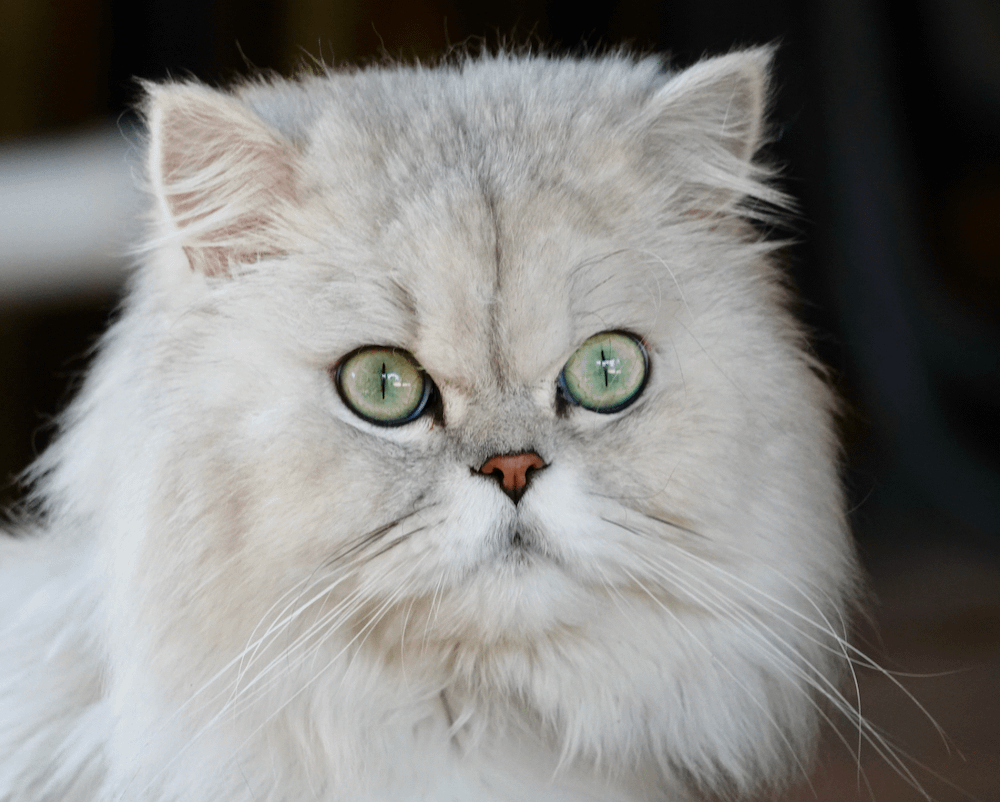
The lifespan of a Persian cat
A Persian cat that is in good health and stays indoors can typically live for 10 to 17 years. Why such a wide range for life expectancy? Persian cats are prone to certain medical conditions (which we’ll explore later in the post) that can hinder their average lifespan. However, many of these conditions can be effectively managed, which means the breed can still achieve a long, happy life.
Persian cats are notoriously low on energy. You don’t get the nickname “furniture with fur” if you aren’t at least a little lazy. This means that pet parents may need to give their Persians a little nudge when it comes to playtime. Remember, daily exercise is still an important component of keeping your cat healthy, regardless of how naturally active they are.
With the exception of their grooming needs, Persians are typically low-maintenance cats. They are content to snooze much of the day, and gaze at their humans with adoration while awake. (Though they may appear slightly grumpy—that’s just their natural expression!)
As mentioned earlier, there are medical conditions that could impact a Persian cat’s health, so it’s essential to take your cat to the vet regularly.
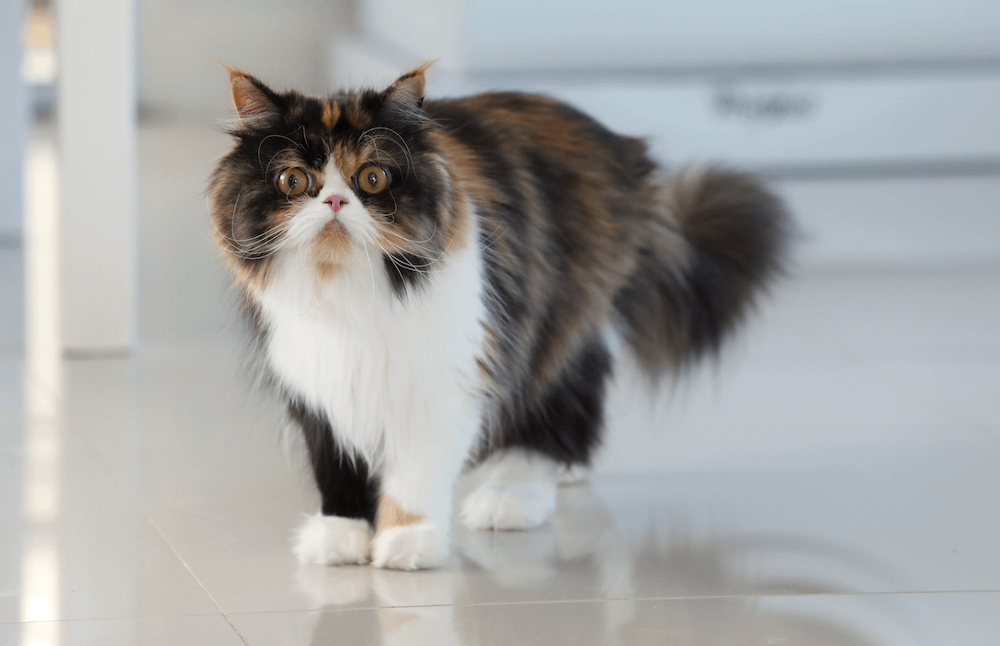
What is a Persian cat?
The Persian cat is without a doubt one of the most famous long-haired cat breeds. While they are best known for their silky solid-white coat, this breed can display a wide range of patterns and colors, including calico, tabby, bicolor, or pointed, and blue, black, red (orange), and beyond.
Their quiet nature and sweet temperament helps them stand apart from a plethora of loud and rather hyper cat breeds (though we love those kitties, too, of course).
History
The Persian cat is thought to have originated four to five centuries ago in Persia (modern-day Iran) and Turkey. They likely descended from Turkish Angora cats crossed with other long-haired Asian breeds.
Their journey across the globe really began in 1620 when an Italian traveler brought several Persian cats back to Italy with him. From there, other travelers brought them from Italy to France, and from France to England. They gained immense popularity in France, and were known as “French cats” for quite some time.
The Persian’s biggest boon occurred in the early 1900s when Queen Victoria adopted two of her own pet Persians. These cats had already made their way to the United States in the late 1800s, but after Queen Victoria’s royal seal of approval, their popularity skyrocketed across both nations.
Characteristics
Besides their long, silky (and demanding) coats, Persian cats are distinguished for their short muzzle and wide-set eyes. They’re sometimes called “flat-faced” or “peke-faced,” which refers to their brachycephalic traits. These traits can lead to health problems, discussed in more detail below.
Persians are heavy-boned, with short, thick legs and a broad chest. They’re considered a medium to large breed, weighing up to 14 pounds.
Personality
At first glance, the Persian cat seems like a quiet, unassuming breed. With time, their lovely personality shines through. These felines are sweet and loyal to a fault—and, perhaps surprisingly, one of the friendliest cat breeds to boot.
Their calm, easygoing nature makes the Persian cat a nice family pet (as long as there isn’t roughhousing going on). They enjoy affection from their favorite humans, but aren’t likely to harass anyone for attention.
You may have to earn a Persian cat’s trust. As long as you’re calm and respectful with them, they likely won’t take long to open up to you. Save for their grooming needs, they are truly an easy kitty to have around your home.

Potential health-related concerns
There are certain medical conditions for which your Persian cat might be more at risk, so knowing what to look out for can help improve how rapidly the issue is diagnosed and treated.
As mentioned earlier, Persian cats are brachycephalic, meaning they have shortened skulls and nasal passages. The degree of brachycephaly varies from Persian to Persian. For some, it is mild and doesn’t much impact their day to day. In more severe cases, it unfortunately results in breathing difficulties and respiratory distress. This can also affect how these cats bite and chew, which may lead to dental problems and eating difficulties.
Persians often have eye discharge or “tear staining” caused by epiphora. Their facial deformities sometimes don’t allow the tear film to drain properly, simply rolling off the face instead. As a result, you’ll need to gently wipe your cat’s face at least twice a day with a soft, warm, damp cloth. If tear staining seems excessive, check with your veterinarian.
Similarly, this breed is prone to other eye problems. They may develop eyelid abnormalities, corneal sequestrums, and conjunctivitis, or “pink eye.”
Persian cats may be more at risk for hypertrophic cardiomyopathy (a thickening of the muscular walls of the heart), which can worsen heart function and lead to heart disease in cats. They may also be prone to polycystic kidney disease, an inherited condition that causes cysts to form on the kidneys, potentially leading to kidney disease.
Giving your Persian the best life
Although Persian cats face quite a few potential health concerns, there are many ways to help ensure they live as long and happy a life as possible. Regular veterinary visits are perhaps most important, but you can provide the nourishment and enrichment your Persian needs to thrive at home.
Because Persians are typically low on energy, you may have to take the lead on exercise. That doesn’t mean these cats don’t have moments of playfulness—they certainly do! Consider it a special treat when your Persian initiates play, and keep the momentum going as long as possible.
Available interactive toys
To give your Persian playtime a little boost, try introducing laser pointers, cat wands, ball toys, and catnip. Although this breed generally prefers to be on the same level as their humans (or even on the floor—so don’t forget a comfy cat bed), your Persian may enjoy climbing a piece of cat furniture. They’ll certainly enjoy napping on one!
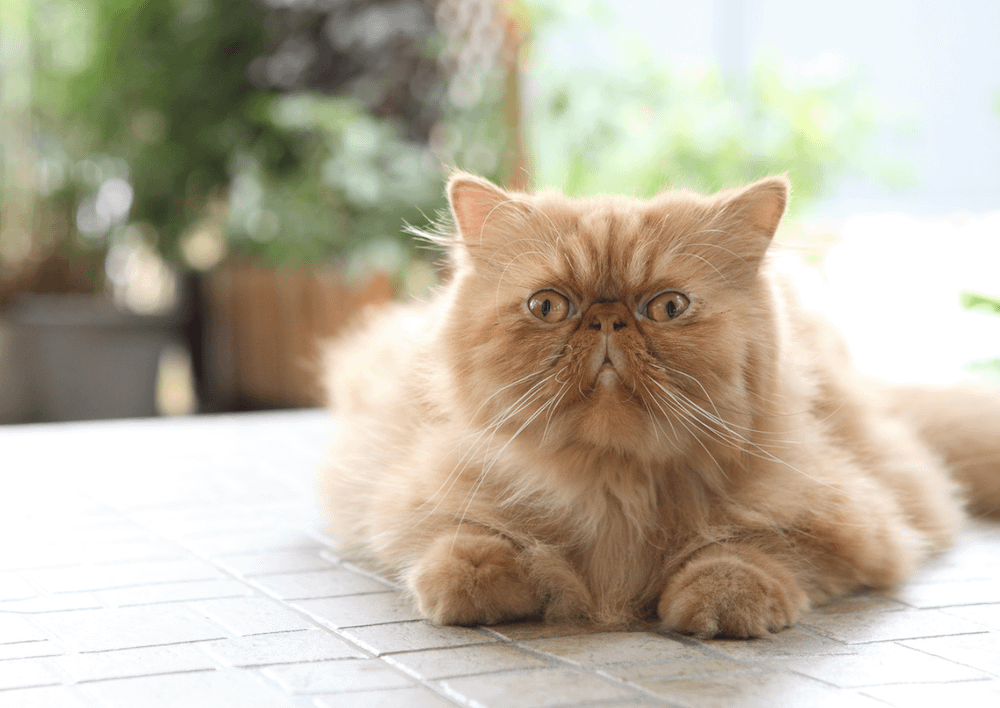
Proper nutrition
Their generally inactive nature may lead to weight gain in Persian cats. Obesity only puts a Persian at further risk for the health conditions listed earlier. If you’re concerned about your Persian’s weight, try an automatic pet feeder that dispenses healthy portions several times a day.
Grooming needs met
There’s no getting around it: Persian cats have demanding grooming requirements. Their silky coat needs daily combing to avoid mats and reduce shedding. Occasional bathing is also important, especially since the long fur around their bum can become, well, dirty. (This is where a self-cleaning litter box comes in handy!) And because they are prone to tear-staining, you’ll need to gently wipe their faces at least once a day.
Make sure to trim your Persian cat’s nails at least once a month and brush their teeth if they’ll let you. More likely, you’ll need to have your vet do dental cleanings—this is important, as the breed may be prone to dental issues.
Veterinarian check-ups
Regular veterinary check-ups are essential for maintaining your Persian cat’s health. Make sure to take your cat to the vet annually before 10 years of age (or more, if your cat has certain medical conditions), and at least twice a year after that. Because this breed is predisposed to certain medical conditions, being aware of any changes in physical health or behavior is paramount.
Welcoming a Persian cat
If you’re thinking about adopting a Persian cat, it’s important to understand the particular needs of this cat breed. While medical conditions can affect their lifespan, the Persian cat is more than capable of having a long, happy life filled with the love and laughter of your home. Welcome a Persian cat with open arms, and you’ll receive a special kind of affection that sticks close to your heart.
